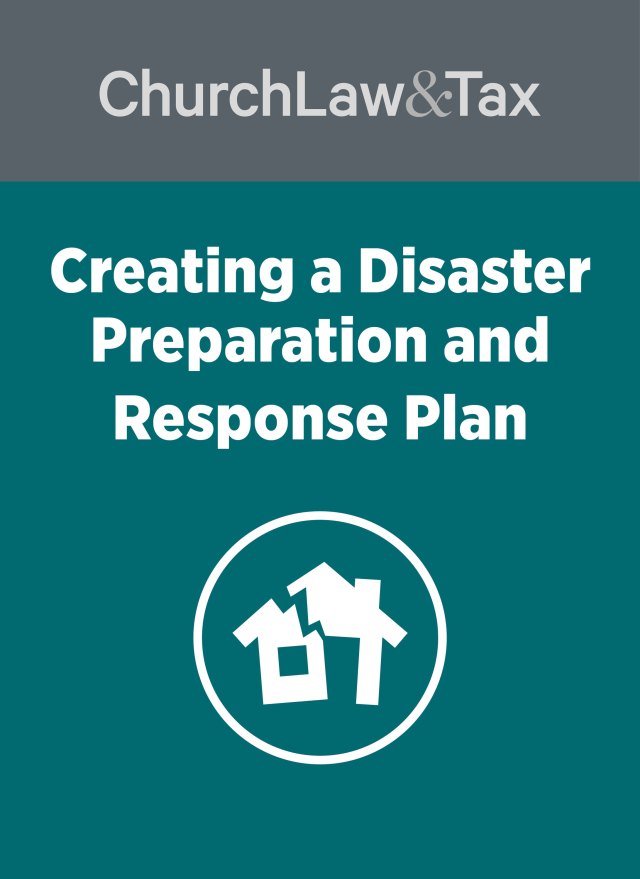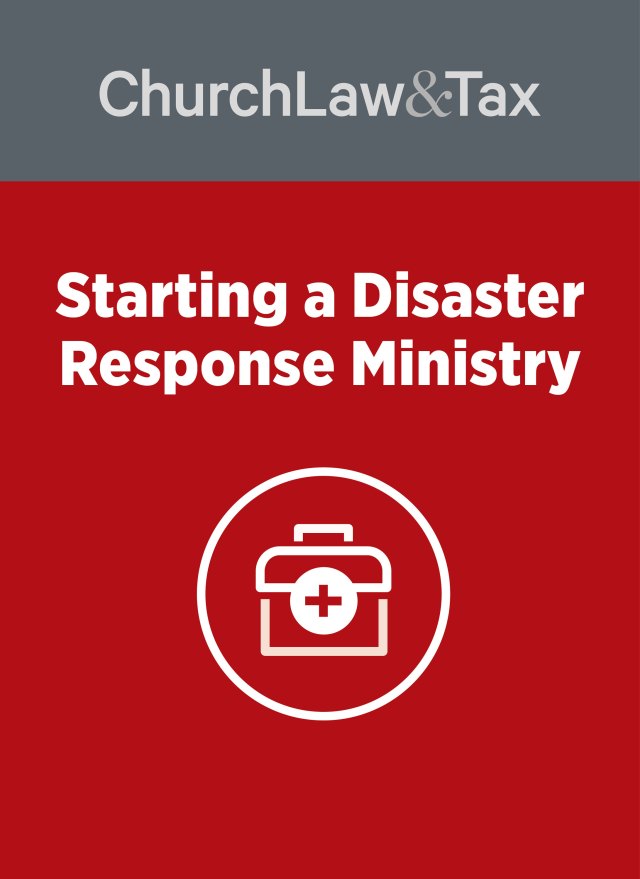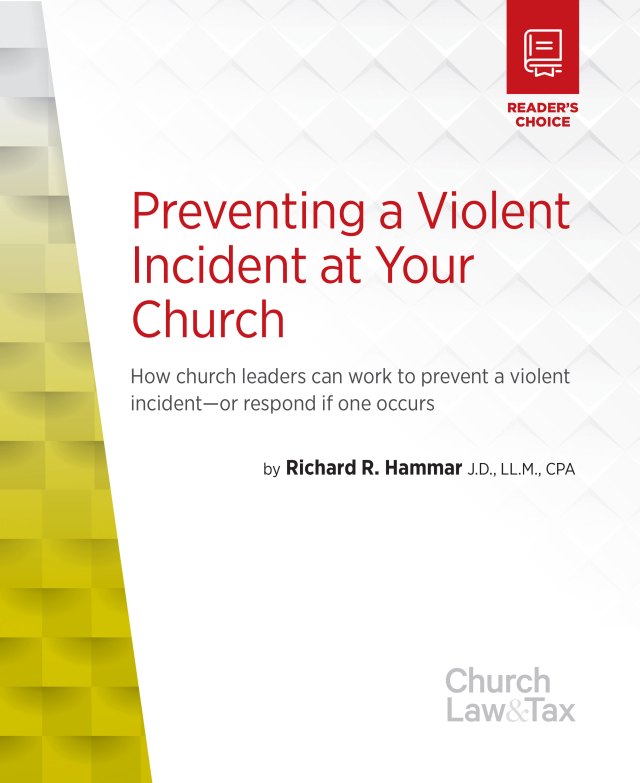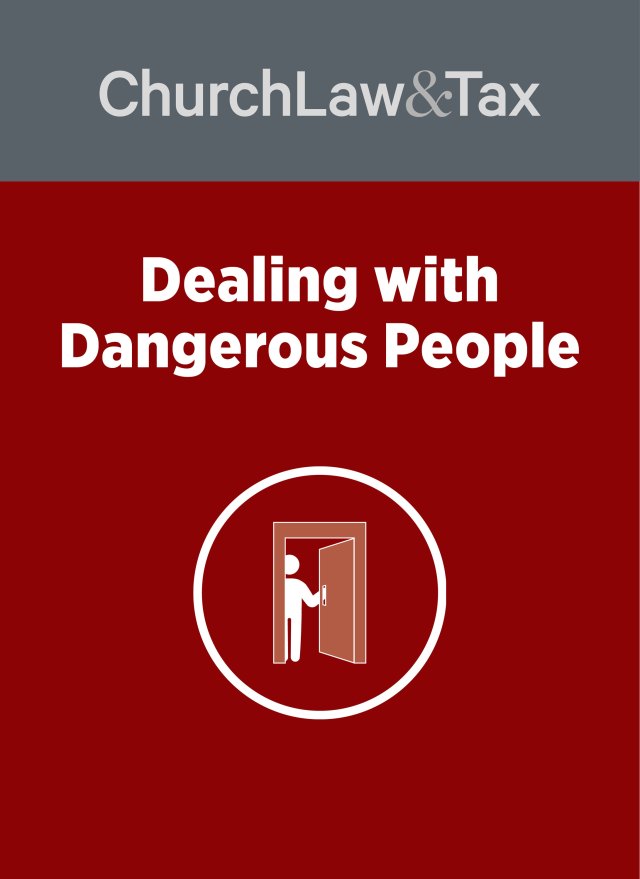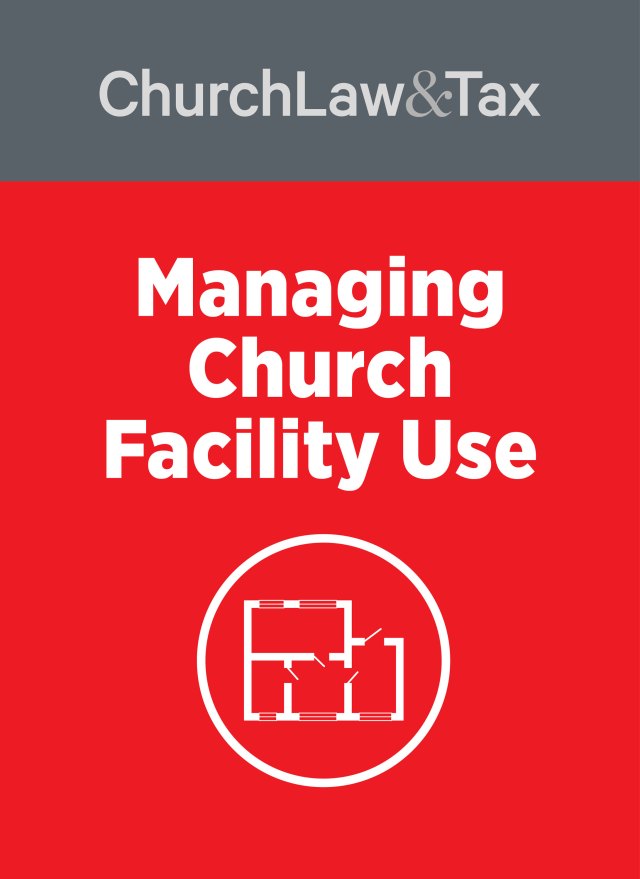The planning modules in this article provide practical assistance for creating emergency response plans. Work through one module at a time and complete each action step. Some modules incorporate checklists to be completed if and when the crisis occurs. Once you have completed working through each module, the foundation will be in place for a broad-based crisis management strategy.
When complete, your crisis management plan should be in writing. It should be streamlined and easy to follow. It does not need to be lengthy. Often, the use of a flowchart format to identify tasks and steps that can be easily followed is the best approach. Lastly, those responsible for carrying out the plan should receive training on an annual basis.
1. Identifying Areas Of Vulnerability
You need only to plan for those natural disasters that impact your region. On the other hand, crises other than natural disasters can strike any church. As a result, a plan is needed for each crisis in this second category.
Natural Disasters
Key point. Check with your local chapter of the Red Cross to identify the natural disasters that could strike in your area.
Place a check next to each natural disaster that could impact your church or school:
Hurricane/Typhoon
Tornado
Earthquake
Flood
Mudslide/Landslide
Volcano
Other__________
Each natural disaster requires completing work on all of the planning modules.
Other Crises
While planning for a fire requires the use of all of the planning modules, the remaining crises vary in which modules they use.
Crisis Modules Possibly Needed for Crisis Planning
Fire– All modules
Moral failure of a leader- Training, communication, assisting the injured, financial plans
Criminal conduct– Training, communication, assisting the injured, financial plans
Acts of violence or suicide– Training, communication, assisting the injured, financial plans
Death or disability of a leader– Training, communication, financial plans
Personal injuries– Training, communication, assisting the injured, financial plans
Litigation– Training, communication, financial plans
2. EVACUATION PLANS
A. Evacuation of Buildings
Obtain floor plans for each building
Using the floor plans, identify two escape routes for each room, designating a primary and a secondary route (note: use staircases—do not use elevators unless directed to do so by a uniformed firefighter or other safety officer).
Key point. If a window is used for evacuation purposes, make sure that it is not painted or nailed shut.
Post a copy of the evacuation plan in each room.
Establish an alarm system or signal to evacuate and contact 911.
Key point. If individuals who are hearing impaired use your facility, install a warning system such as a flashing light to indicate the need to evacuate.
Instruct staff to close doors when exiting rooms.
Have all exits clearly marked.
Install emergency lighting and test on a regular basis.
Establish a list of people in the building who may need special assistance in evacuating and designate a specific trained individual (or individuals) to assist them.
Establish a list of vital documents or items that should be removed from the building and designate a specific trained individual (or individuals) to remove them as long as time permits and it is safe to do so.
Key point. Maintain an evacuation box that contains an extra supply of checks, a list of key individuals and phone numbers, computer back-up data, and key ID numbers or account numbers.
Key point. Keep all vital documents in a security box at a bank or, as a second choice, in a fireproof safe.
Key point. Do not jeopardize any person’s safety to retrieve documents.
Designate a specific trained individual to shut off utilities as long’ as time permits and it is safe to do so.
Key point. Do not jeopardize any person’s safety to shut off utilities.
Key point. If natural gas is shut off, only a licensed professional should turn it back on. Check with your gas company in advance to obtain their recommendation for emergency procedures and whether or not to shut off the gas supply.
Using the site map, identify safe gathering points at least 150 feet away from the building for those who evacuate.
Develop a plan for leaders and staff members to conduct a head count to account for all people in the building.
Instruct staff and leaders to keep people away from any downed power lines, or broken electrical lines.
Instruct staff not to allow occupants to re-enter the building until directed to do so by an authorized person.
Key point. Some safety officers or firefighters may not be in uniform. Seeing individuals in plain clothes entering an evacuated building does not mean that it is safe to re-enter.
Include emergency response information in the church directory, or in a student hand book. Designate a backup phone number where people can call to get information.
Action steps for remaining in the building, but relocating to a safe location.
Using the floor plans, identify the safest locations within each building for occupants to remain until the crisis passes.
Train staff members on the location and use of safe areas.
B. Evacuation to a Different Location in the Same City
Key point. If you must evacuate a building and leave the property, it is important that you have a site selected in advance to which you may go.
Identify a specific gathering point such as another church or school in another part of the city.
Using a map, identify evacuation routes to the point of rendezvous.
Include emergency response information in the church directory or in a student handbook. Designate a backup phone number where people can call to get information.
C. Responding to a Mandatory Evacuation of a City
Key point. Some communities have evacuation plans in place. Check with your local Red Cross or city government to obtain copies of such plans.
If your local government mandates an evacuation:
Identify a specific gathering point such as another church or school in a different city.
Using a map, identify main and secondary evacuation routes out of the city to the point of rendezvous.
Fuel all vehicles as soon as the possibility of an evacuation exists.
Establish a list of individuals with special needs within the congregation who would need help to evacuate and an action plan to assist them.
Initiate a building shutdown.
Drivers of church or school vehicles should have clear and unequivocal instructions never to drive across roads with moving water during flood conditions.
Include emergency response information in the church directory or in a student handbook. Designate a backup phone number where people can call to get information.
D. Evacuation of Individuals with Special Needs
Maintain a list of members who will require special assistance.
Designate trained individuals to assist with the evacuation of specific individuals, including babies in a nursery.
Have all vulnerable individuals complete an emergency health information card that includes the following: insurance information, list of physicians, medications, allergies, emergency contact list and phone numbers, and other special needs. Retain copies of the cards. In addition, those assisting with the evacuation should have a copy of the card.
Train those who will assist with the evacuation to collect emergency documents (e.g., checks, credit cards, bank books, prescriptions, medical instructions, family records,) and special equipment, medical devices and supplies, eyeglasses, dentures, medications (in their original container), diapers, and keys.
Create emergency kits that contain non-prescription drugs including aspirin, nonaspirin pain relievers such as acetaminophen or ibuprofen, anti-diarrhea medication, laxatives, and antacids.
3. Emergency Plans
A. For Building Shutdown
Key point. A building shutdown helps control losses during a fire or natural disaster.
Establish a team to shutdown the building if an emergency should occur.
Create a diagram that identifies the main shutoff switches and valves for electrical power, water, and natural gas. Post the diagram in a designated location.
Establish an action plan to shut off utilities.
Key point. If natural gas is shut off, only a licensed professional should turn it back on. Check with your gas company in advance to obtain their recommendation for emergency procedures on whether or not to shut off the gas supply.
Establish an action plan to prevent water from backing up into the building through drains.
Key point. Install check values to prevent water backup. If check valves have not been installed, use corks or rubber stoppers.
Prepare and install shutters over windows.
Key point. If detachable shutters are used, number or label both windows and shutters to speed up and coordinate the installation process.
Key point. Tape will not prevent windows from breaking.
Prepare and install plywood covers for glass doors.
Close doors and windows.
Secure backup copies of all computer data.
Collect vital documents that are stored at the church (e.g. deeds, checks, bank documents, and insurance policies).
B. Emergency Plans For Damaged Facilities
Provide immediate assistance to trapped or injured persons. Call 911 for help. Do not move seriously injured people unless other risks pose greater harm to them. Apply whatever first aid you can.
Implement the church or school’s building shutdown procedures. Have someone designated to shut off utilities until a proper inspection of gas lines and electrical wiring occurs. A gas leak or electrical problems pose risks of fires and explosions.
Post signs and install barriers to keep people away from damaged buildings.
Do not enter any building that has standing water around it. The combination of standing water and electricity can be deadly.
Do not use a lantern, blow torch, or matches when returning to inspect or repair any flooded building until you know it is safe to enter. When you do enter, use a battery-powered flashlight.
If you smell the odor of gas, turn off the gas valve if possible and leave immediately. Call the gas company from a nearby residence or business. Do not reenter the building until you have received clearance from the gas company.
Examine the structure of the church or school building, including the foundation, walls, floors, and windows. Look for cracks or other signs that damage has occurred.
If the building has been flooded, keep an eye open for animals and snakes that may have entered the building during the flood. Do not use bare hands to sort through debris. Use a stick, shovel, or rake.
Watch your step to avoid exposed nails and other sharp objects. Wear shoes with thick soles.
Clean up any spills of flammable liquids, but stay out of any building in which you smell fumes of gases.
Be careful when opening cabinets, closets, and cupboards, since items may fall out when the doors are opened.
Inspect all chimneys before igniting any fires. Any structural damage could result in a fire.
Begin the clean-up process as soon as it is safe and feasible to do so.
Initiate whatever salvage operations are possible and document all of your losses in writing and with photographs.
Throw away all food from the church or school kitchen that has become contaminated.
If flooding has occurred and the church or school has a well, have the water tested before it is used. Also, do not drink city tap water until you receive notice that it is safe to do so.
If you vacuum water from the floor using a wet-dry cleaner, carefully read the manufacturer’s instructions. Make sure that it is properly grounded and use a vacuum with a ground-fault circuit-interrupter (portable GFCIs are available and can be plugged directly into an outlet).
Any furnishing that has been covered with water is a possible source of bacterial contamination. Such items, including carpeting, must either be thrown out or steam cleaned, sanitized, and dried.
Water damaged furnishings from a church nursery should be replaced to avoid any risk to children. In addition, wet insulation must also be replaced since it can harbor biological pollutants.
If flooding has occurred, make sure that electrical equipment such as furnaces, freezers, refrigerators, and other appliances get a chance to dry thoroughly before they are used.
All electrical appliances that have been exposed to water should be inspected and tested by a qualified technician.
Check to see that smoke and carbon monoxide detectors are working properly.
Permit only experienced individuals to use chain saws on church or school property while assisting with the cleanup. The use of chain saws can be extremely hazardous.
Locate alternative facilities that can be used.
C. Emergency Plans To Assist The Injured
See that all church vehicles are equipped with an adequately supplied first aid kit.
See that an adequately supplied first aid kit is located in the church office.
Require a first aid kit at all church construction projects.
Have at least one staff member certified to do CPR.
Key point. Contact the American Heart Association for locations of CPR classes.
4. Emergency Communication Plans
A. Emergency Communication
Post crisis phone numbers next to each office phone, including poison control, the police, and the fire department.
Key point. All staff members should be trained to dial 911 if an emergency occurs.
Install alarm systems to notify building occupants of an emergency. Train staff on the use of the system.
Install a direct alarm to the fire department.
Install a bell or buzzer that sounds in the pastor’s office, or other locations in the church, to indicate an emergency need in the church office, such as help in responding to a transient or street person.
Establish a phone tree to contact a large number of people quickly during an emergency.
Install a bulk e-mail program to transmit e-mail quickly to designated individuals or groups.
If church facilities must be evacuated, establish a backup phone number that parents and others can call to get information. Publish the information in the church directory or in a student handbook.
B. Communicating Emergency Information with Congregational Members
Create a phone tree to disseminate information to designated groups within the congregation.
Maintain a backup set of mailing labels for congregational members.
Collect e-mail addresses of congregational members and use a bulk e-mail program to transmit messages.
Install and use voice mail messages.
C. Communicating Sensitive Information
Communicate sensitive information on a need-to-know basis only following the guidance of legal counsel.
If sensitive information is mailed to congregational members, mark the envelope “privileged and confidential.”
If confidential information is communicated to the congregation during a church service, do so only with congregational members present. Have all visitors and nonmembers leave.
When communicating confidential information, report only facts known to be true and avoid personal opinion.
5. Emergency Financialplans
Identify the amount of funds available to pay for losses out of cash flow.
Establish a cash reserve to be used for emergency funding.
Review insurance coverage for disaster planning, including coinsurance, deductible amounts, debris removal, how property will be valued (replacement cost is preferred over actual cash value), and the need for special coverage for floods or earthquakes.
Establish a line of credit with a bank.

